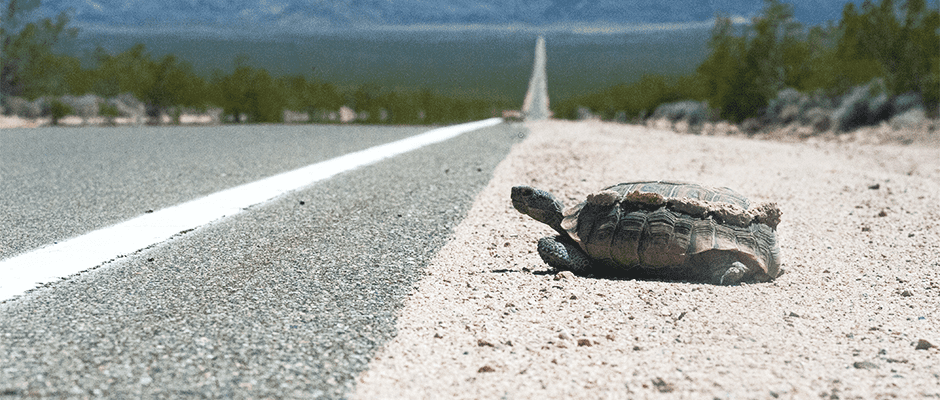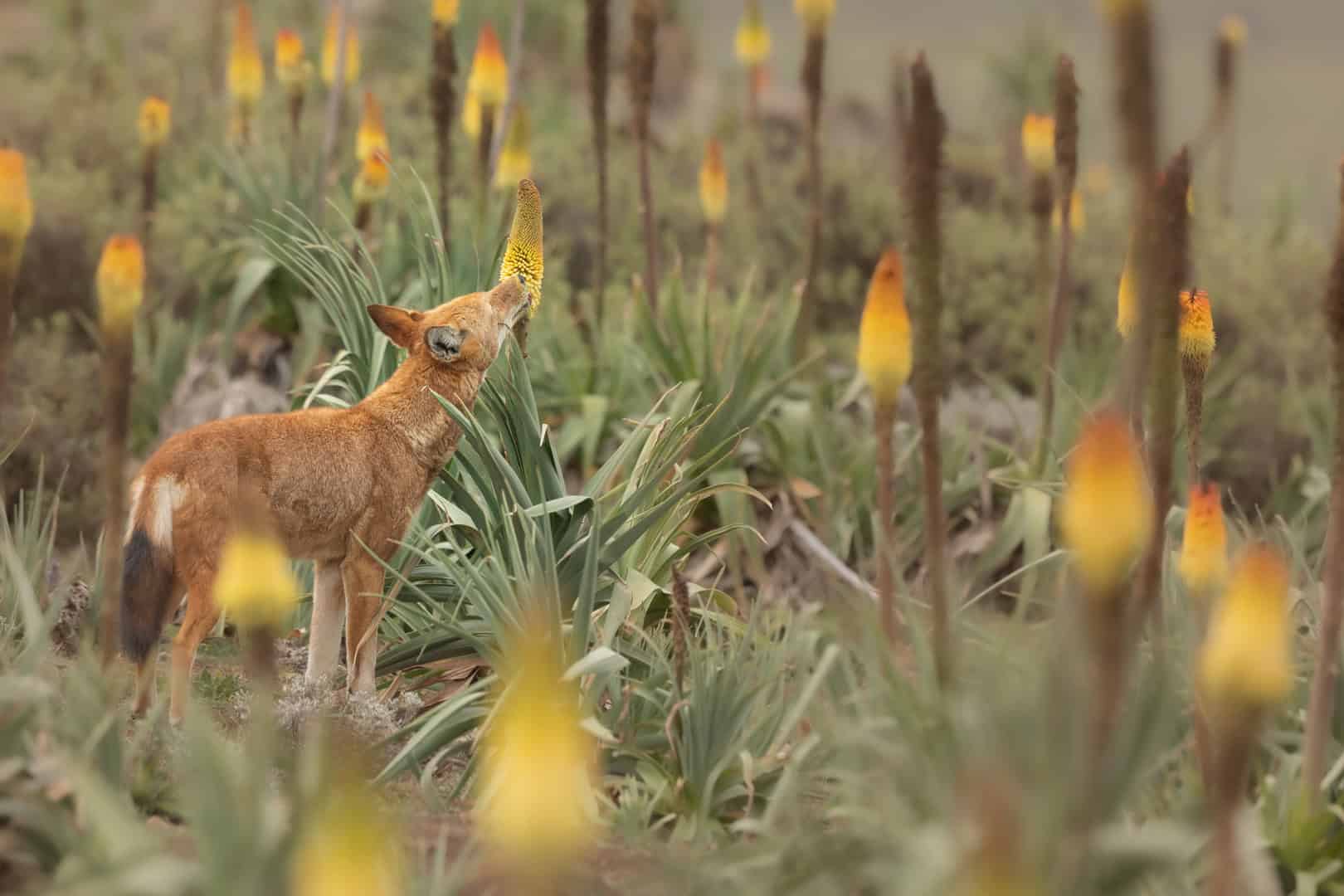Share this article
Meant to protect tortoises, roadside fencing could endanger some
Roads fragmenting the threatened Mojave Desert tortoise’s habitat put the slow animal in danger of being run over by whooshing vehicles. But roadside fencing installed to keep it out of harm’s way can overheat the tortoise, new research suggests, and that could impair its survival.
“If they get caught out next to a fence and pace alongside it, the animals are going to get stressed and heat up a lot more,” said John Mark Peaden, lead author on the paper published in Biological Conservation. “That can alter their success with finding burrows, mates and simply surviving.”
Several agencies recently began erecting fences to barricade Mojave Desert tortoises (Gopherus agassizii) from highways and reduce tortoise deaths due to traffic. Peaden, a PhD candidate with the University of California, Davis, was curious about how the reptiles interacted with the fencing. So between 2013 and 2015, in Ivanpah Valley near the border between California and Nevada, he and colleagues from UC Davis and the University of Georgia monitored tortoises every 15 minutes using GPS and temperature loggers stuck to their shells.
“Animals that were 20 meters away from the fence were a lot cooler than animals next to the fence,” he said.
The tortoises closer to the fence heated up because they would pace the fence for kilometers at a time under the desert sun in temperatures than can reach 120 degrees Fahrenheit, Peaden said.
“It appears the fencing may have bisected their home ranges,” he said. If you’ve been going to the same area for the past 30 to 40 years, you want to get back to that home.”
To prevent the consequences of excessive heat exposure in the tortoises and enhance their habitat connectivity, Peaden and colleagues recommend further studies informing fence improvements and the creation of culverts at the barren, sandy washes where the reptiles tend to cross roads.
“We should figure out what is causing the animals to pace the fence, change fencing type or implement shade structures to get the most benefit from roadside fencing,” he said.
Previous reports indicate that tortoises pace less when fencing is made from opaque material rather than wire mesh they can see through, and they crawl into PVC pipes laid along fencing to cool down.
The Mojave Desert tortoise has been declining rapidly over the past few decades, Peaden said, down from up to 70 individuals per square kilometer to five in its range across California, Nevada, Arizona and Utah. One of the greatest threats they face is habitat fragmentation from roads, which could cut off females from the slow-breeding population and cause declines, he said.
Header Image: A Mojave Desert tortoise tries to cross a road in southern California. ©John Mark Peaden








